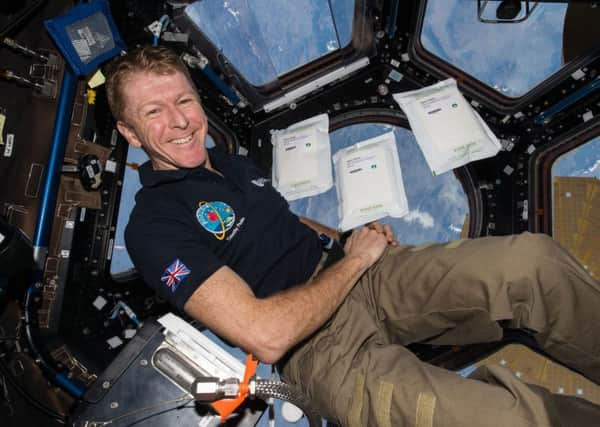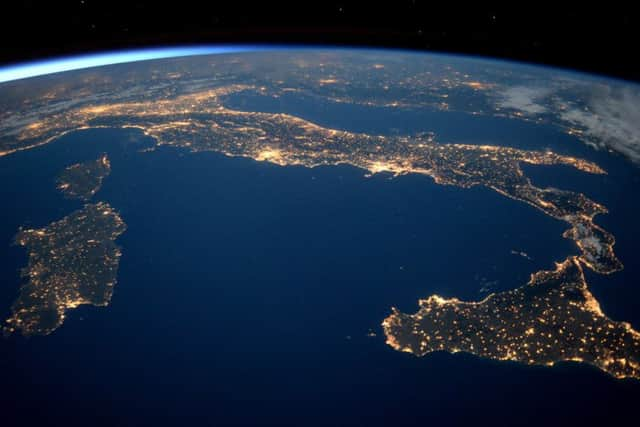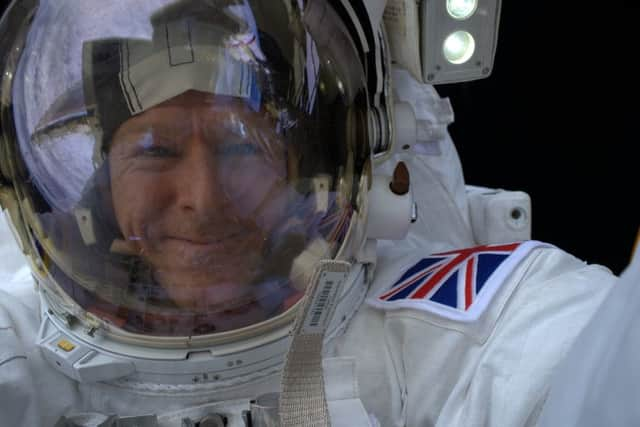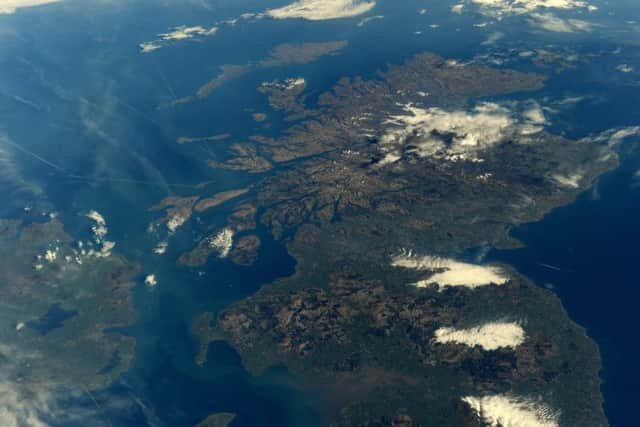How will astronaut Tim Peake re-adjust to the world?


When Ed White sent his final communication to Nasa’s mission control during his space walk in 1965, the American pioneer articulated an emotion that generations of astronauts would experience for themselves. “I’m coming back in,” he told his superiors in Houston, “and it’s the saddest moment of my life.”For the 536 people who have escaped Earth’s confines to witness space in all its majesty and mystery over the decades, the only thing more disorientating than the outward journey must surely be the return. This small band have glimpsed creation from afar and been privy to some of the most remarkable sights the universe has to offer. It is little wonder that the idea that they might resume an ordinary life seems so fantastic.
Yet next weekend, the latest member of that coterie will discover for himself how to reconcile a life above and beyond with the everyday. After 186 days in orbit, Major Tim Peake returns to terra firma on Saturday. The British astronaut lands in Kazakhstan early in the morning, the culmination of a mission he has described as “everything I hoped for and even more”.
Advertisement
Hide AdAdvertisement
Hide AdAfter leaving the Russian Soyuz spacecraft, he will board a Nasa aircraft to Bodo, Norway, before taking another plane to Cologne, where he is due to arrive at the European Astronaut Centre (EAC) in the early hours of next Sunday. There he will undergo medical check-ups and tests as part of research into how humans adapt to living in space.


In time, the 44-year-old will return to his beloved West Country, where home comforts will doubtless aid the process of readjustment after a six-month mission. Reuniting with his family will be his priority, but in his final interview from on board the International Space Station, Peake gave a particularly British answer when asked what he had missed the most – the rain. “Perhaps that’s because I haven’t had a shower for six months,” he said. “The feeling of nice cold drizzle on my face right now actually sounds blissful.”
Indeed, such simple pleasures are alien to those who spend months on the ISS. Astronauts cannot lie down in a bed because of the weightlessness, instead zipping themselves into special sleeping bags. Foodstuffs, meanwhile, are predominantly in a dehydrated state, with only the occasional batch of fruit and vegetables adding colour to their diet.
The dutiful Peake has never complained of such matters, at least not in public. Instead, he has spent the majority of the mission – known as Principia, after Isaac Newton’s Naturalis Principia Mathematica, which described the principal laws of motion and gravity – engaged in practical, hands-on scientific work.
Together with Nasa astronaut, Tim Kopra, and Russian commander-cosmonaut, Yuri Malenchenko, Peake has conducted a wide range of experiments – more than 30 in all – and taken part in a dozen research activities at his orbital workstation some 400 kilometres above the Earth.


According to Dr Steve Taylor, a senior lecturer in psychology at Leeds Beckett University who has interviewed several astronauts about their life during and after their time in space, Peake’s work will help him readjust to life on the ground.
“He has had a major responsibility during his mission and hopefully he will feel his work has been of value to a wider community,” he says. “Tim seems like a very positive person and I’m sure he’ll feel he has been of use of the whole human race by testing the extremities of existence.”
The work carried out on the ISS included measuring electromagnetic radiation on the sun as well as monitoring radiation levels in space capsules so as to help inform and protect future long-duration space missions.
Advertisement
Hide AdAdvertisement
Hide AdPeake’s participation in the mission saw his own body used as a testing ground. In an experiment known as Brain-DTI, he will be examined in detail upon his return to help understand how the neural processes of perception adapt to weightlessness.


According to the European Space Agency, this research could ultimately lead to new tools for further exploration of spatial cognition. And Peake’s log of any headaches he experienced while in orbit will be used to help develop measures to reduce migraines.
Such practical applications are at the heart of Principia’s pioneering work. Another experiment, known as Circadian Rhythms, focused on how Peake adapted to the novelty of seeing no fewer than 16 sunrises and sunsets every day during his time in space. The impact on his biological clock, the ESA hopes, will aid not only future missions, but people who work irregular hours, such as doctors and paramedics.
The highlight of the mission, Peake has said, was the “truly incredible” space walk he made in January. He and Kopra stepped outside the ISS to replace a faulty electrical component and install cabling. Unexpectedly, they were then granted 10 minutes of free time, waiting for the sun to set behind Earth before it was safe to approach the solar arrays.
Those exalted few minutes would be “cherished forever”, said Peake later. “That was truly incredible, just to be able to explore that part of the space station and look down on planet Earth, and also look behind me and look out into the darkness and the vastness of space while outside the space station.”


He will have the rest of his life to reflect on and articulate such moments. It is no surprise that several astronauts have taken up poetry on their return to Earth, as they seek to find the words that do justice to extraordinary sights. One, William McCool, memorably said the sight of the entire Earth, visible to the naked eye, was “beyond imagination”.
Such experiences have crystallised into what is known as the Overview Effect, a phrase coined in the book of the same name by space philosopher and writer, Frank White.
The term refers to the experience of seeing first-hand the reality of the Earth from space and resultant cognitive shift in awareness reported by the few who have witnessed it.
Advertisement
Hide AdAdvertisement
Hide AdAnnahita Nezami, an integrative counselling psychologist in the final stages of writing her doctoral research at the City University London, is exploring the therapeutic value of the effect.
She interviewed seven retired Nasa astronauts as part of her research, all of whom described the experience as awe-inspiring, one that helped them form a more significant and positive emotional attachment with their home planet.
“It’s a qualitative piece and you can’t make big generalisations, but from my understanding based on my study and past research, the one thing the astronauts share is this feeling of Earth’s fragility and beauty,” she says. “It really strengthened their emotional attachment to the planet and their desire to protect it.


“There was a noticeable shift in their world view and inclinations to be more benevolent, environmentally friendly and inclusive. As life went on, each one of them to varying degrees noticed behavioural changes. The experience certainly strengthened their existing beliefs surrounding environmental issues and motivated all of them to act on these beliefs and inclinations. Someone like Ron Garan, for example, spoke of this immediate realisation of how everything was interconnected.”
Indeed, Garan, a Nasa pilot who took part in two missions over the past decade, including a spell on the ISS, gave an articulate summary of his time spaceflight to Nezami. The trips, he said, opened up a “sobering contradiction between the beauty of the Earth and the injustices and unfortunate realities on it”.
Such a realisation, Nezami believes, is not uncommon among the small fraternity of space explorers, and can evoke a state of tension that psychologists refer to as cognitive dissonance – the stress or discomfort experienced when holding conflicting beliefs, ideas, or values.
Yet while many astronauts attest to the inspiring wonder of space, others have struggled to reconcile themselves to a life back on Earth, at least at first.
The first generation of astronauts, men from scientific and military backgrounds who became internationally famous pioneers, were largely left to their own devices upon their return, with no experts on hand to confide in or simply talk to. Some turned to God, others to the bottle.
Advertisement
Hide AdAdvertisement
Hide AdBuzz Aldrin, for example, battled depression and alcoholism, a fight chronicled in his book, Magnificent Desolation. Coming back to his home planet, Aldrin admitted, led to periods of self-evaluation and concern. “What am I doing?” he once asked. “What is my role in life now? I realised that I was an experiencing a melancholy of things done. I really had no future plans after returning from the Moon, so I had to re-examine my life.”
Fortunately, a network of help is now at hand to ease astronauts back into life on Earth. The ESA has a dedicated medical office where psychologists will help Peake readjust after living with such a small group of people in a confined, artificial environment.
Even so, Taylor warned that Peake is not guaranteed to readjust quickly. “There were support issues with the first generation of astronauts, and while that has improved significantly, there is potentially a very difficult period of integration ahead for him,” he explains. “Initially, astronauts get a great wave of euphoria and a tremendous sense of wellbeing and appreciation when they come back, but like people who have near death experiences, that can be followed by feelings of confusion and bewilderment.
“Their whole world is turned upside down and they have to re-evaluate themselves. There’s an element of trauma and people deal with it in different ways.
“The big problem for him will accepting the mundanity of the everyday, there will be a comedown at some point.”
No amount of professional support is likely to help Peake find answers to the grand questions he may come to ponder. When Chris Hadfield came back to Earth, he admitted to feeling slightly removed on account of his remarkable journey. “I’ve had a chance to see something that is way outside everybody else’s frame of reference and gives a perspective that is very different from everyone else’s,” he said, before asking: “How do you then rationalise that with the rest of your life?”
Ultimately, though, Nezami says the experience of space flight is an enriching one. “Extraordinary and intense experiences, such as going into space, some near death experiences or climbing Mount Everest, can cultivate a new appreciation for life, allow people to re-connect to the world, as well as reflect on existential matters,” she adds.
“They can make us feel more interconnected with the world we live in, they can expand our sense of self and enhance our sense of wonder.”
Advertisement
Hide AdAdvertisement
Hide AdThe concept of oneness or “cosmic consciousness” experienced by some astronauts, Nezami believes, could have wider applications on Earth. “It’s impossible to fully recreate the Overview Effect due to factors such as the extreme environment and weightlessness, but I think you can learn from that sort of God view the astronauts have.
“It might be used to inform long-duration space missions, such as those to Mars where you don’t have the luxury of seeing Earth, as well as adapted and applied, perhaps via virtual reality simulations, to counselling psychology, for example, to help alleviate stress and burnout, applied to end-of-life care, used for educational purposes and for environmental campaigns.”
At the outset of his adventure, Peake said: “I hope Principia will encourage people to observe the world as if for the first time – just as Isaac Newton did.” As his astonishing journey nears an end, perhaps he now will too.